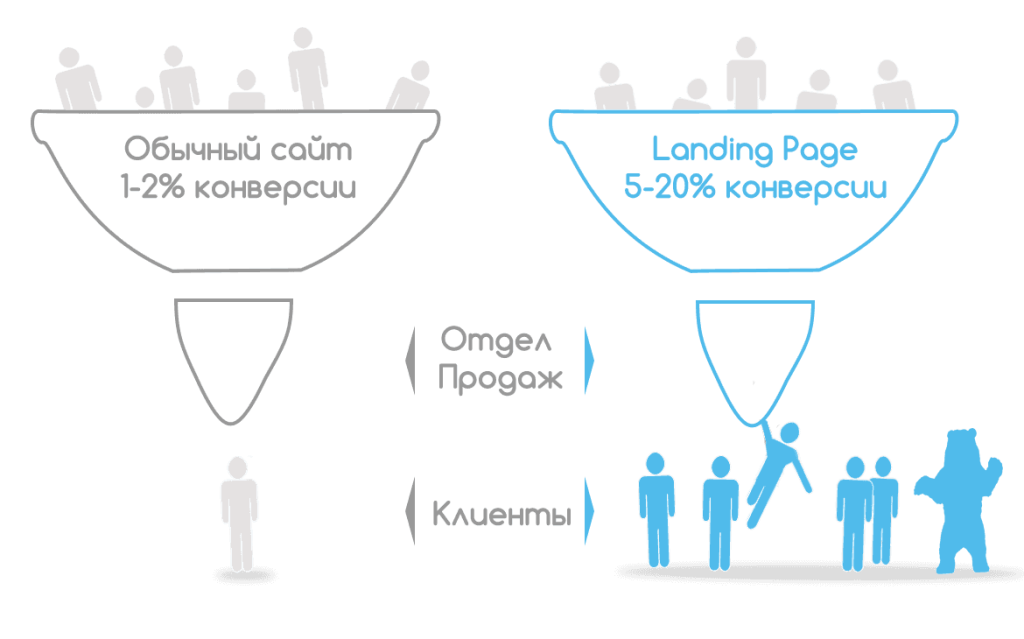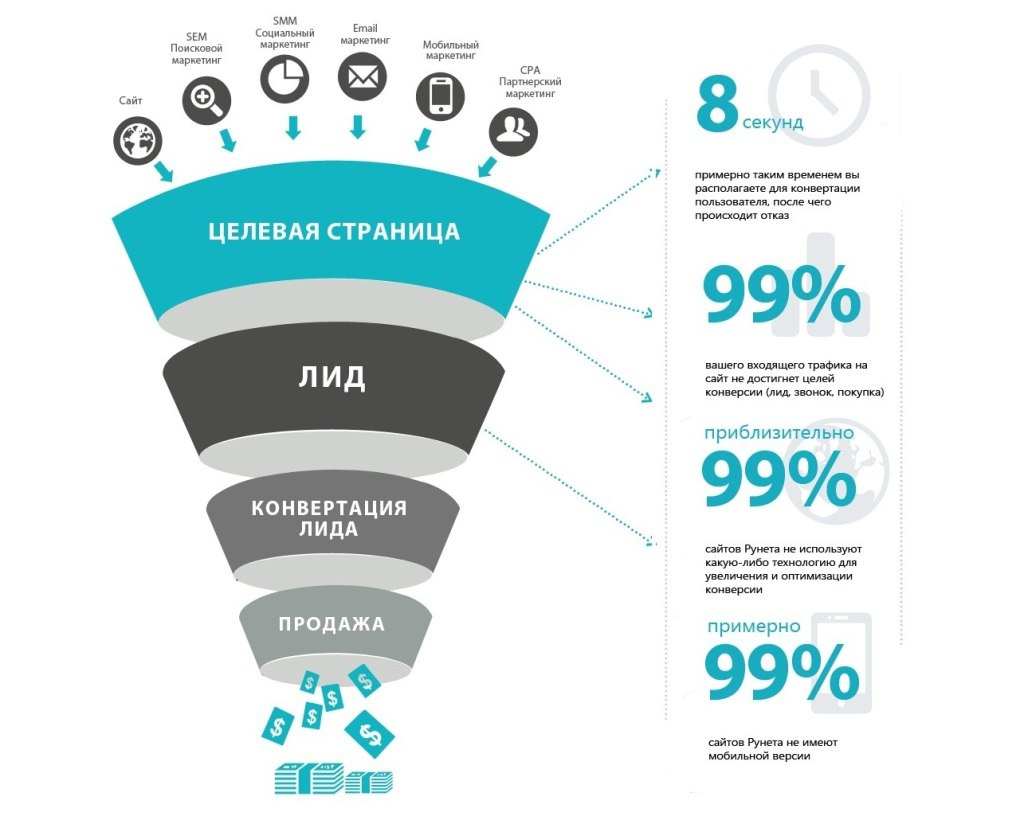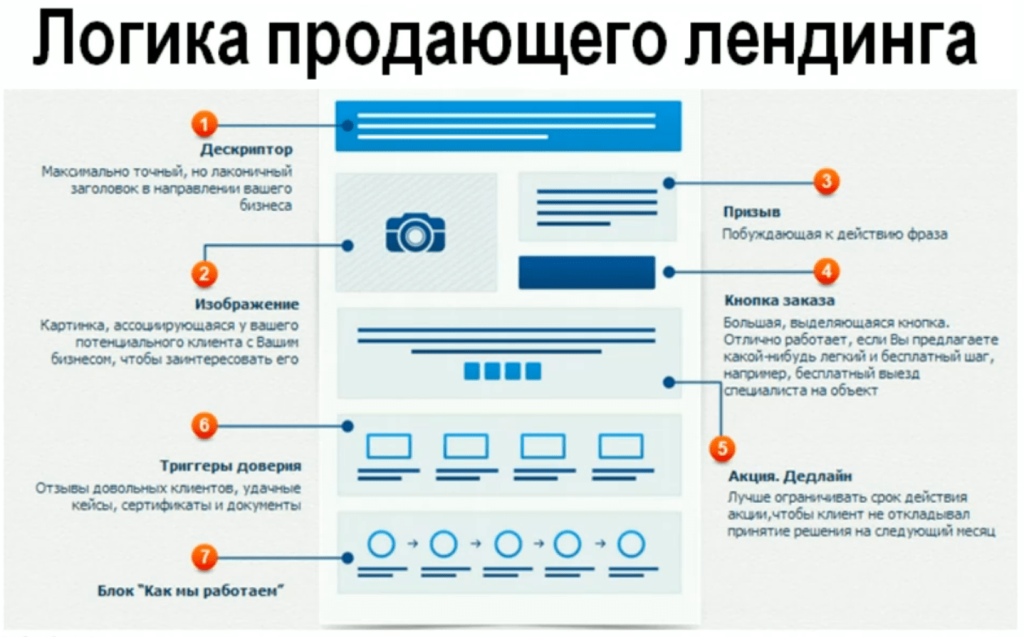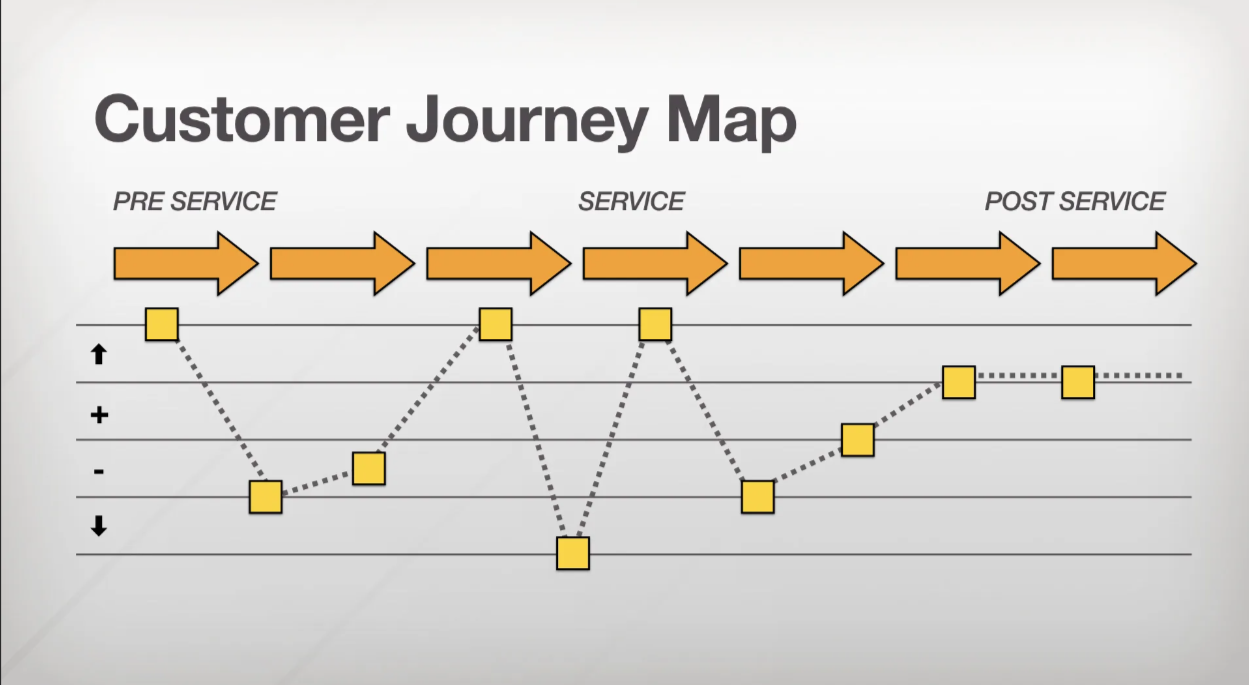How to increase landing page effectiveness? This is a question that concerns every marketer and business owner. Improving conversion is a key goal discussed in case studies, at marketing conferences, and when launching websites, quizzes, and social media advertising campaigns. Conversion plays a vital role in achieving success and business growth online. Let's look at several effective strategies that will help increase your landing page conversion.
Types of Conversion
When talking about landing page conversion, we usually mean converting visitors into leads: the number of customers who completed a target action on the landing page is divided by the total number of visitors, then multiplied by 100% to get the conversion rate. For example, if the site had 200 visitors and 30 of them submitted a request, the conversion rate is 15%.
When a person performs the main target action on a landing page, this increases the site's macroconversion.
In addition to the main capture form, a website may also include additional calls to action, such as newsletter subscriptions, company news, leaving a review, or downloading a lead magnet. These micro-conversions are also taken into account when analyzing landing page performance.
Large marketing agencies strive not only to monitor the effectiveness of advertising and landing pages but also to manage the work of their clients' sales teams. Specialists develop scripts and analyze manager-customer conversations to identify errors in the sales process. This way, they increase not only lead conversion (the number of requests from the website) but also sales conversion (the number of deals closed after interactions with the sales team).
It's important to understand that lead conversion isn't as important as sales conversion. You might get 100 leads with a simple target action (like downloading a lead magnet), but ultimately only sell your service to 10 of them.
Try to focus on attracting targeted visitors to your website (those who are genuinely interested in purchasing, want a quote, or need a surveyor to come out). You may receive fewer inquiries, but they will be higher quality and more targeted.

What influences conversion?
Conversion rates can vary significantly from business to business and are dependent on a variety of factors that make each case unique.
Seasonality factor:
Seasonal changes impact conversion rates. For example, a landing page selling air conditioners might generate 20-30 inquiries per day in the summer, but demand declines after the season ends.
Urgency factor:
Products and services related to food or medical needs typically sell more frequently and quickly, as customers make instant decisions when hungry or sick. In contrast, purchasing a country cottage on the seashore requires more thought.
Competition factor:
Conversion rates may be lower in highly competitive environments. For example, when selling offline English courses, customers search for schools nearby, and the pool of potential customers narrows due to the presence of numerous competitors in the same area of a large city.
Upselling on the website:
The ability to make additional sales on a landing page or website, for example, by offering mothers who have purchased a foreign language course for their child the opportunity to enroll in a course for adults, can increase conversion.
Product cost:
- The price of a product affects conversion because a high price can create doubts in potential customers and reduce conversion.
Professionalism of the advertiser:
The effectiveness of an advertising campaign depends heavily on the skills of the advertiser. Even an imperfect landing page can be successful with well-designed advertising, but a poor advertiser can reduce conversion rates even if the landing page is well-designed.
Traffic heat:
Selling products and services to customers already familiar with your company is usually easier than selling to cold leads. Therefore, using micro-conversions on your website aimed at different target audiences (e.g., buy for warm leads, calculate a price or receive a personalized offer for warm leads, download useful material, visit a blog, or subscribe to VK for cold leads) can increase conversions.

Death to Conversion
Over the course of our marketing work, we've analyzed numerous landing pages and compiled a list of common mistakes that negatively impact conversion:
- Irrelevant offer: When a user searches for a specific service or product but lands on a page that doesn't match their search query. This could be a general company catalog or the website's homepage, rather than seeing a clear offer and price for what they were looking for.
- Slow website loading: If a landing page is overloaded with complex animations or videos, this can slow down the page loading speed, leading to user disengagement.
- Clunky Capture Forms: When a form contains too many required fields, it can discourage users and reduce their chances of converting.
- Inappropriate solicitation methods: Promising to send a catalog or other information but not requesting the necessary contact information, or requesting information that is inconsistent with the service being offered, can cause distrust among users.
- Lack of Capture Forms, Buttons, and Calls to Action: If your landing page doesn't contain clear calls to action or doesn't offer the user the option to leave contact information, it limits conversion opportunities.
- Incorrect display on mobile devices: If the landing page is not adapted for mobile devices, users may experience display issues, leading to a poor user experience and lost conversions.
- Untrustworthy design: If your landing page design looks unprofessional, contains stock images, or contains low-quality photography, it can create doubts in users and reduce their trust in the products or services offered.
- Poor quality advertising: If an advertising campaign is not set up effectively or does not reach the target audience, it can lead to low conversion rates.
To identify and analyze these errors on your website, we recommend using a paid audit, which will allow the marketer to detect violations and provide general recommendations for improving conversion.

How to Increase Conversion Rates - 11 Ways
We present 11 effective ways to quickly increase landing page conversion rates. Here are the methods we actively use in our work:
- Address on the first page: Place your business address in the most prominent place so visitors can immediately see the location of your service. This method is especially useful for brick-and-mortar businesses, such as service stations, beauty salons, foreign language schools, veterinary clinics, and children's clubs.
- Keywords in the Title: Include keywords or phrases customers are searching for in the landing page title. You can use a multiple landing page or a slider with a rotating title to offer the most relevant information to each visitor.
- Website promotions: Include attractive promotions on your website, especially if your competitors are also offering similar deals. This will help attract visitors' attention and encourage them to make a purchase.
- Strong Offer: Develop a compelling proposition that will benefit your customers or solve their problem. Tailor the offer to the needs and interests of your target audience.
- Targeted actions: Use target actions that align with the urgency and value of the purchase. For example, offer an easy first step, such as calculating the cost, downloading a catalog, receiving a quote, or a trial period.
Applying these practical approaches will help you increase conversions on your landing page, attract more leads, and improve the performance of your business.
Further approaches are more serious.
- Don't buy ready-made website templates. It's better to create them yourself. If you buy them, be sure to optimize them for your target audience. If you can't conduct in-depth interviews with clients and validate your questionnaires with quantitative research, at least conduct desk research: study your target audience's reviews of your direct competitors and communicate with your sales department.
Based on the information you receive, you can determine what's important to your audience, what problems they're experiencing, what objections they face, and which product benefits you should emphasize. Optimize your messaging based on this data, because the more accurately you target, the higher your conversion rate.
Here are some examples of basic questions to ask before designing/modifying a page:
- What product/service is most frequently purchased?
- What needs are of greatest concern to customers?
- What are customers most dissatisfied/satisfied with?
- What are the most common objections?
- What is most important when purchasing (speed, service, delivery, uniqueness, etc.)?
- What do customers like/dislike about your competitors?
- Who influences the purchase (pre-purchase advice)?
In fact, the number of questions can be large, and depending on your niche, you can refine the current ones and add several dozen more.
- One target audience, one landing page. Don't mix and match your landing page and turn it into a regular website, attracting traffic from every possible source. The key is to ensure that the headline, benefits, photos, testimonials, and all other information address the needs of a specific group of people. If you have several different target audiences, create different pages or use content substitution. Different landing pages simplify audience analysis and their needs, allowing you to offer a more high-quality and unique offer, which ultimately leads to higher conversions.
Below is an example of the same landing page, where the information changes depending on the city the user is visiting from, creating a more unique offer.
- The structure must be clear and consistent.
Website visitors' attention spans are decreasing every year, leading to a more cursory skimming of information on a page. Therefore, it's important to avoid content overload.
When creating content, always consider how to shorten and simplify information while maintaining its core essence. Divide the content into clearly defined sections, each answering a specific question or addressing an objection, avoiding mixing them up.
Before creating a landing page, it's important to conduct a target audience analysis to determine the most important information and arrange it in the top blocks. Below is a sample page structure, where each block contains important information, sorted by descending priority:
- Headline and subheadline: attractive and informative to interest the visitor and give the general idea of the offer.
- Core Proposition: A concise and compelling description of a product or service, the key benefits, and the value it provides.
- Social proof: customer reviews, ratings, recommendations, and other forms of confirmation of the quality and reliability of your offer.
- Additional features or functions: A detailed description of additional features that make your offer more attractive and beneficial.
- Pricing and Packages: Information about the different pricing options, service packages or products offered by your company.
- Guarantees and Refunds: A description of the guarantees and refund policy to ensure you receive a reliable and secure purchase.
- Call to action: A clear and compelling call to action that compels the visitor to take a specific action, such as placing an order, signing up for a newsletter, or contacting you.
- Contact Information: Your company's contact information so visitors can contact you for more information or support.
Maintaining this structure and presenting information in an organized manner will help improve visitors' understanding of your offer, retain their attention, and increase the likelihood of them taking the desired action.
- Relevant traffic for each landing page
Individual landing page optimization for different traffic sources and target audiences is key to your campaign's effectiveness. An approach that works for contextual advertising with hot search queries may fail to attract the attention of social media users, not because of poor offer quality, but because they are at a different stage of the sales funnel.
Perhaps these users are just beginning to show interest in your product or service and aren't ready to make a purchase right now. In that case, you'll need a different landing page that offers different information and offers.
- Testing: Test different USPs
Test different unique selling propositions (USPs). While researching your target audience, develop several variations of offers or wording for the same target audience and test them in different combinations. Sometimes, a simple headline change can increase conversion rates several times over.
Let's look at an example for the homepage of our service, 1PS.RU, where we have a variety of clients (business owners, marketers). Our goal is to formulate a unique selling proposition (USP) that will attract maximum attention.
To begin, we create several hypotheses:
- 1PS is a digital agency specializing in small and medium businesses.
- We have been finding clients for small and medium-sized businesses for 22 years.
- Increase your small and medium business revenue with comprehensive online marketing.
We then present different offer options to different users, measure the results, and select the one with the best response. If none of the results meet expectations, we start the process over again until we find the optimal offer.
- One target action per landing page
Each landing page should have only one clear target action, such as a subscription, a sale, an appointment, a call, etc. Avoid forcing users to choose, as this can lead to doubt and rejection. The simpler the action, the better. Nowadays, it's difficult to sell something directly, so it's recommended to develop intermediate steps to engage users.
Conclusion
To achieve high conversion rates on a landing page, it's important to adhere to certain guidelines when designing and creating it. It's important to note that a properly designed landing page can increase the number of inquiries by 5-10 times. Therefore, we recommend reviewing these recommendations and implementing them when creating your own landing page.







